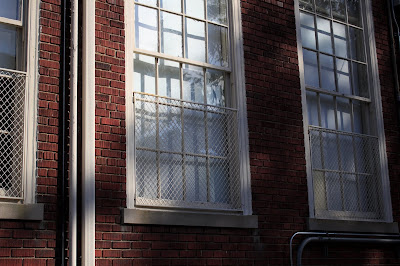In making pictures that have shadows or heavy contrasts with light, when I would open the aperture in my camera and sped the shutter slightly, I noticed that she spots of light/shadows would become more defined. When I would adjust the ISO along with these adjustments, it would make the highlights that were reflecting off of the window appear brighter, creating a bigger contrast.
I tried the exercise that we did that one day in class, and I adjusted my lens so that it is zoomed out all the way and moved as closely as I could to this pole on the street. I noticed that it created the fisheye lens effect that we had talked about, and the pole didn't appear as flat as it did when I would step back and adjust my lens so that it zoomed all the way inward.
When I would take pictures of the sky, the shutter speed and ISO definitely played a part in how the clouds would look. Most importantly, the shutter speed. The faster the shutter was, the more defined the clouds became, instead of just white blobs. When I adjusted the ISO with this, the sky appeared to get darker as well.
This is another example of the exercise that we did in class, in messing with the lens length and the distance between us and our subjects. I used the mirror in my room to test out this theory, and it also created a "fish eye" effect by making my camera appear less flat, and having it separate slightly from my face.
When I would slow down the shutter speed, the clouds behind the sign appeared to have the "white blob" effect, making it appear as if there is no background behind the street sign.





No comments:
Post a Comment